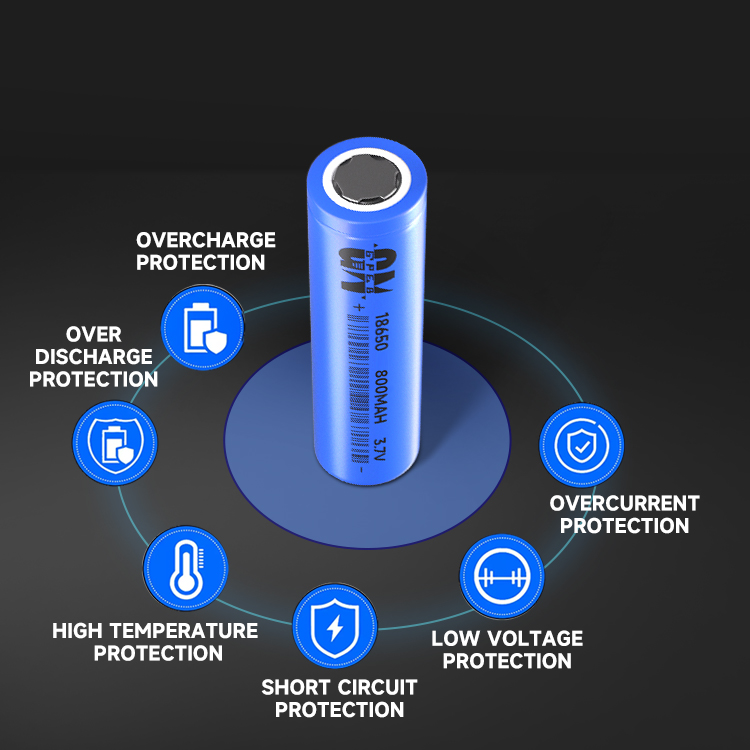

In order to avoid thermal runaway of lithium-ion batteries during the extrusion test and improve the safety of lithium-ion batteries, it is necessary to conduct in-depth research on the mechanism of thermal runaway of lithium-ion batteries during the extrusion test, so as to conduct further research on lithium-ion batteries. Targeted safety design to improve the safety of lithium-ion batteries in extrusion tests.
With the rapid development of the electric vehicle industry, lithium-ion batteries are widely used in the field of power batteries due to their advantages of high energy density, no memory effect and high safety. Due to the particularity of electric vehicles, higher requirements are placed on the safety of power batteries. For example, when an electric vehicle encounters a safety accident such as a collision, the power battery must not catch fire or explode to ensure the safety of drivers and passengers. Therefore, the power battery safety test experiments include extrusion, acupuncture and other tests involving the safety performance of lithium-ion batteries under extreme abuse conditions. Whether it can pass these stringent safety tests is the key to evaluating a lithium-ion battery. The ultimate standard in battery safety.
In the extrusion test, the lithium-ion battery shell first deforms, and then begins to squeeze the battery core. Since the separator prepared by the current dry stretching process has low strength in the transverse and diagonal directions, the battery core When the deformation reaches a certain level, the transverse direction of the separator will break first, causing direct contact between the positive and negative electrodes of the lithium-ion battery, causing a short circuit, instantly releasing a large amount of heat, causing a decomposition reaction of the negative SEI film, positive active material and electrolyte. This causes the lithium-ion battery to undergo thermal runaway, which ultimately causes the lithium-ion battery to catch fire and explode.
In order to avoid thermal runaway of lithium-ion batteries during the extrusion test and improve the safety of lithium-ion batteries, it is necessary to conduct in-depth research on the mechanism of thermal runaway of lithium-ion batteries during the extrusion test, so as to conduct further research on lithium-ion batteries. Targeted safety design to improve the safety of lithium-ion batteries in extrusion tests. Let’s take a look at the latest research results from the Massachusetts Institute of Technology in the United States.
Juner Zhu and others from the Massachusetts Institute of Technology in the United States used 18650 batteries to study the mechanism of thermal runaway of lithium-ion batteries during axial extrusion, and conducted simulation analysis using a finite element analysis model. This model restored different The analysis results of the impact of axial pressure on lithium-ion batteries were verified by CT scans. The simulation analysis found two reasons that can explain the short circuit of lithium-ion batteries during the extrusion test.
Since 18650 batteries in power battery packs are generally assembled vertically, axial extrusion is the main cause of lithium-ion battery deformation when the battery pack is dropped, so JunerZhu mainly studied the battery deformation under axial pressure. The mechanism that causes short circuit in lithium-ion batteries. Some traditional models assume that the interior of the lithium-ion battery is a uniform whole, so they cannot accurately predict the test results when predicting the axial compression test of the 18650 battery. This is mainly due to the special structure of the lithium-ion battery cell, resulting in the The upper and lower parts of the core are not completely consistent. At the same time, due to the unique structure of the lithium-ion battery upper cover (that is, the positive electrode), when the lithium-ion battery is subjected to axial pressure, the lithium-ion battery may be damaged before an internal short circuit occurs. A short circuit has occurred.

Popular recommendation
CR1216 battery.Energy Institute has made progress in the research and development of polymer electro
2023-10-08AG9 battery.Germany develops new sensor technology to reduce weight and cost of lithium-ion batterie
2023-10-141.2V NiMH batteries.High security, high density, BAK engineers decipher the thermal management of cy
2023-10-09602030 lipo battery.Ni-MH battery management system based on CAN bus
2023-10-09LR41 battery.Power lithium batteries: innovation capabilities and safety research are shortcomings
2023-10-141.5v Button battery.What are the wiring methods for iron lithium-ion battery protection board?
2023-10-14LR726 battery.Energy storage battery usage scenarios
2023-10-14LR621 battery.Introduction to the production process of 18650 lithium-ion battery pack
2023-10-12What is the difference between a battery and a lithium battery
2022-11-09What should be paid attention to when assembling lithium batteries
2022-11-04802540 polymer battery.Let’s take a look at several technical points related to cylindrical batterie
2023-10-083.7V 18650 lifepo4 battery.Interpretation: Where do domestic lithium battery pack technologies still
2023-10-08